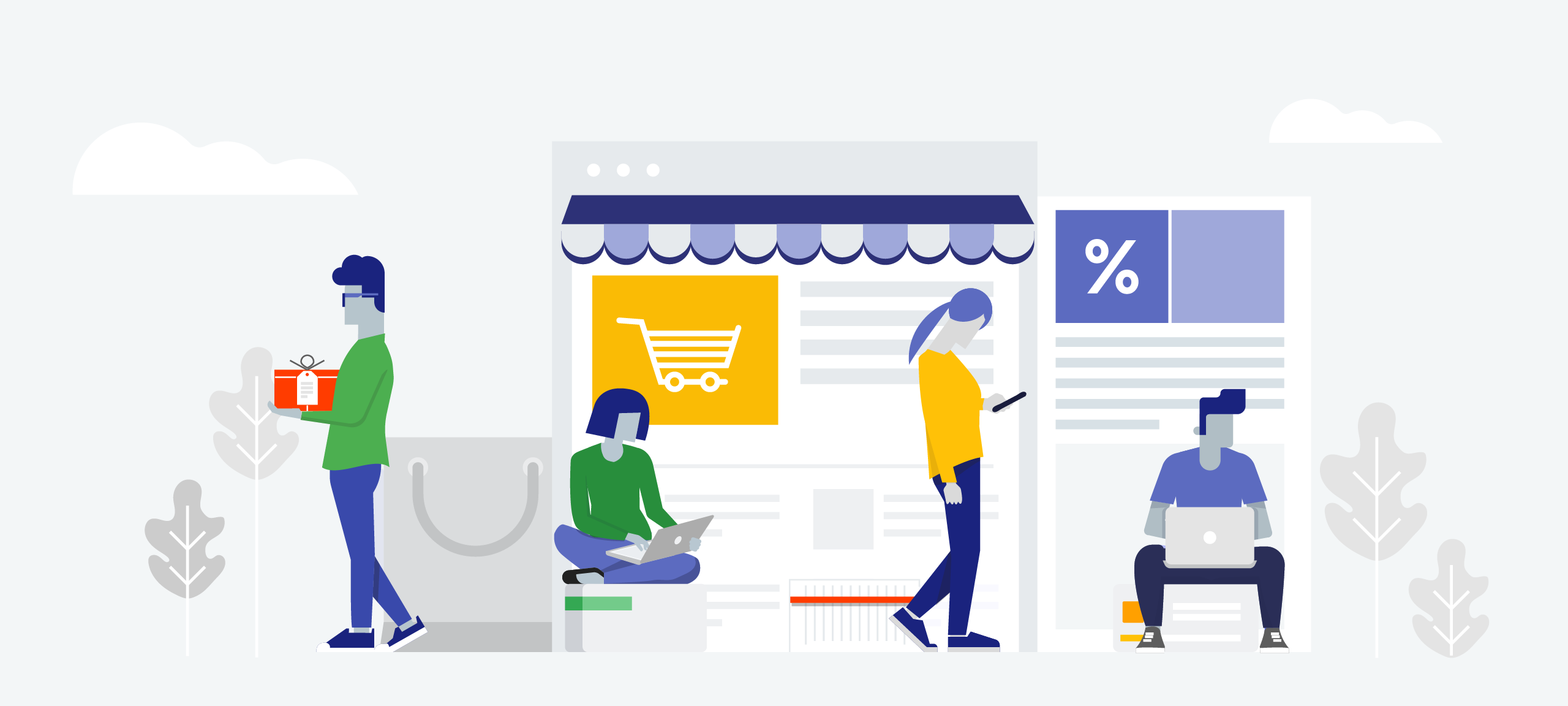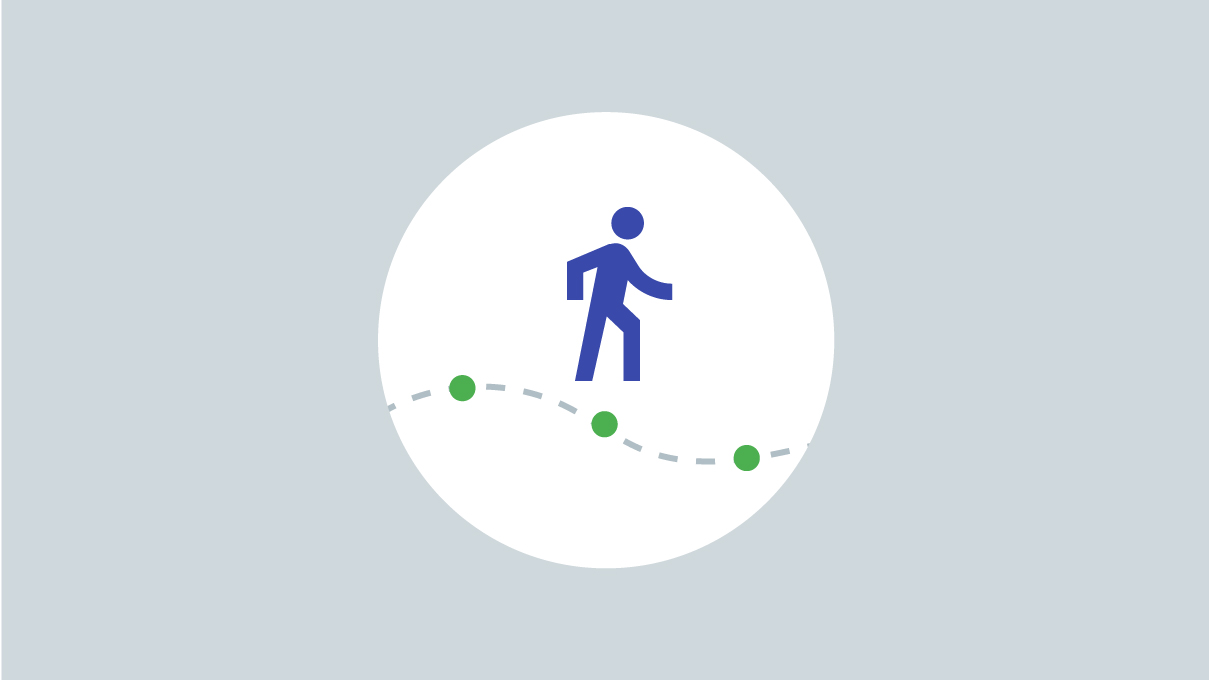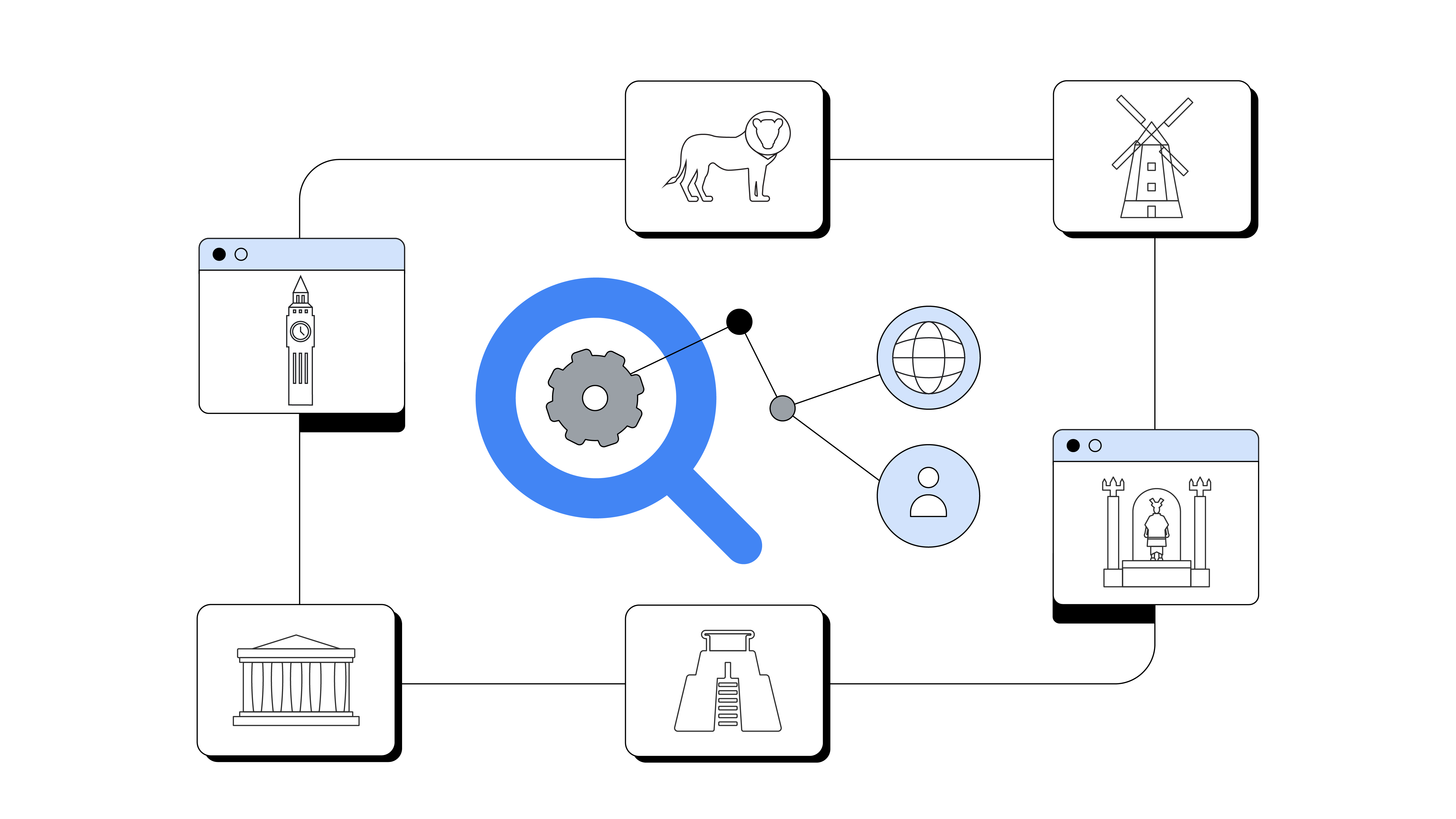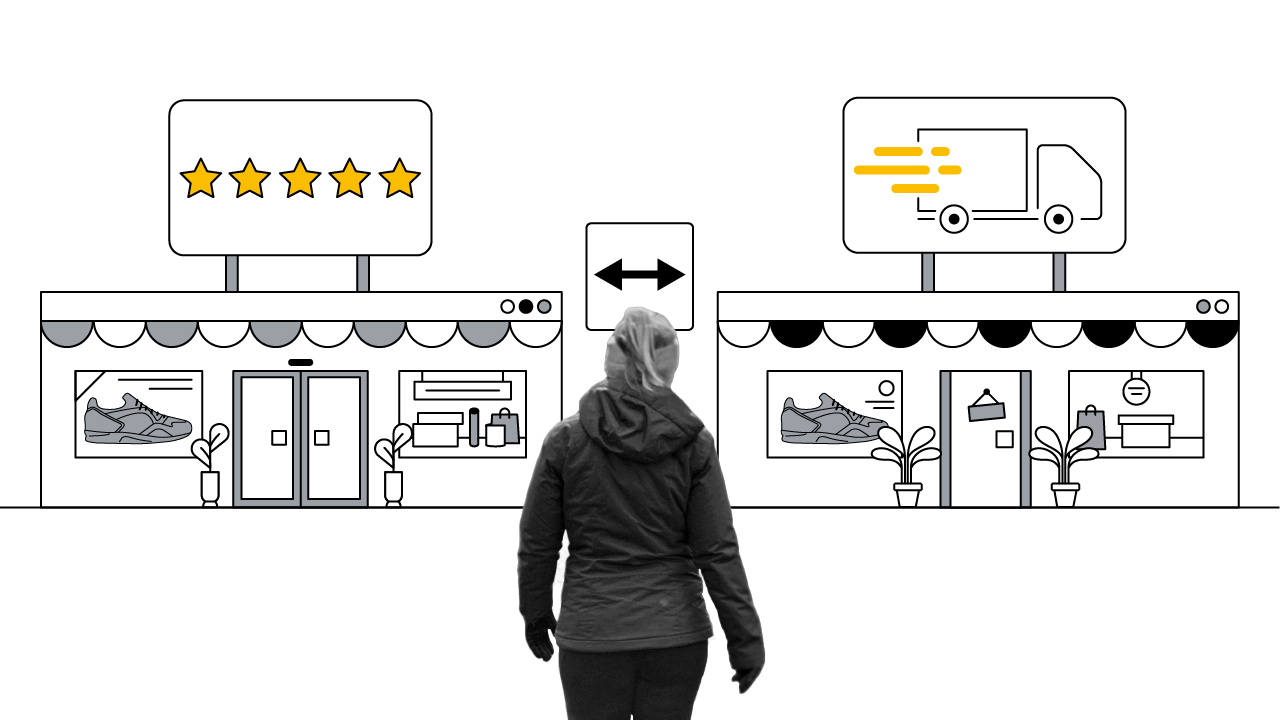New data from a Google CEE and IPSOS study reveals the complexities of the modern path to purchase. Polish consumers are as every bit as complex as their regional neighbours, but the study found shopping habits that are “particularly Polish”.
A recent study carried out by IPSOS and Google CEE1 surveyed 4,500 consumers across four categories of products and services — Notebooks, TVs, mobile phone contracts, and clothes and footwear. The study focused on 16+ year old Internet users in Poland, Ukraine, Greece, and the Czech Republic who had recently made a purchase.
The modern path to purchase spans across devices, touchpoints, and timeframes. Complex and nuanced, Polish shoppers share common ground with their regional counterparts — but the study revealed consumer behaviours that can be labelled as being particularly Polish.
Brand loyalty
As global brands struggle with brand loyalty, it’s alive and well in Poland. In three out of the four service and product categories, Polish shoppers were more likely than their regional neighbours to have a single brand in mind before beginning the research process.
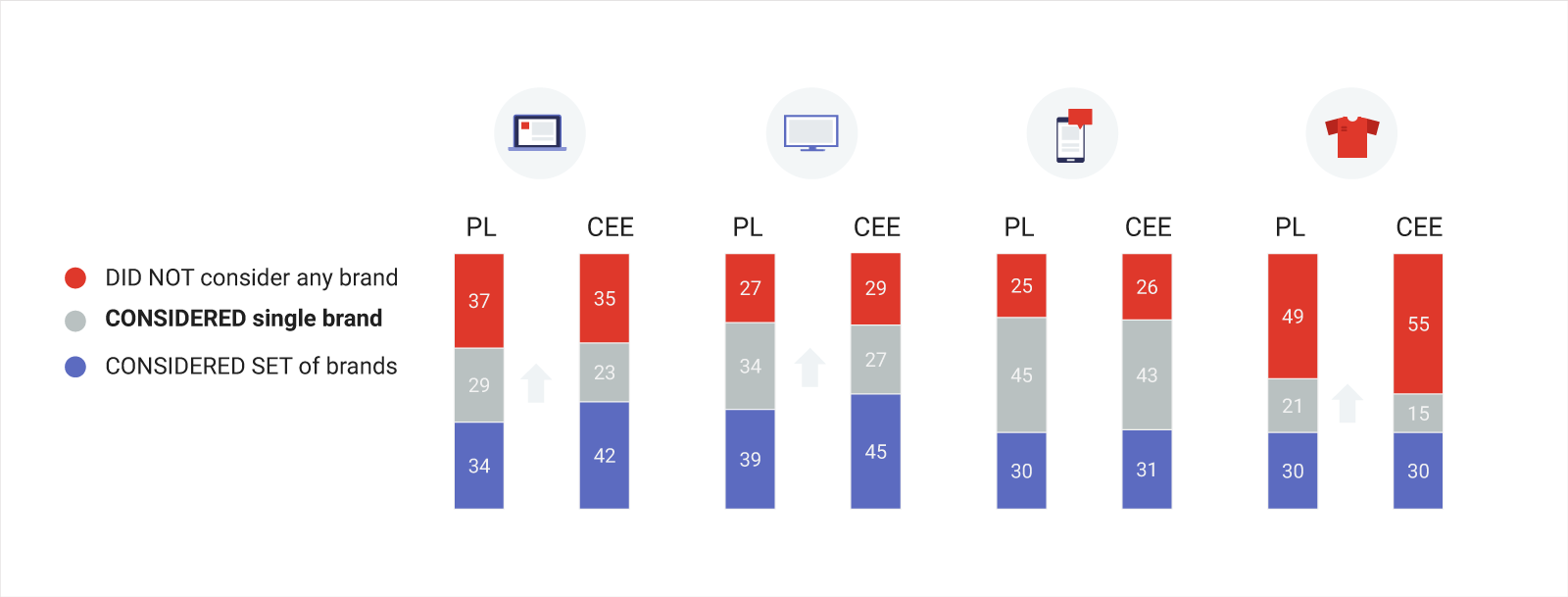
Offline touchpoints
In the digital era, we shouldn’t underestimate the importance of online-to-offline activity. Consumers move seamlessly between both worlds, and as marketers our job is to market and measure holistically.
Polish shoppers value brick-and-mortar more than consumers from the other three countries. When shopping for TVs and, clothes and footwear, Polish consumers are more likely to use an offline store during the research process than other offline touchpoints like TV spots or print.
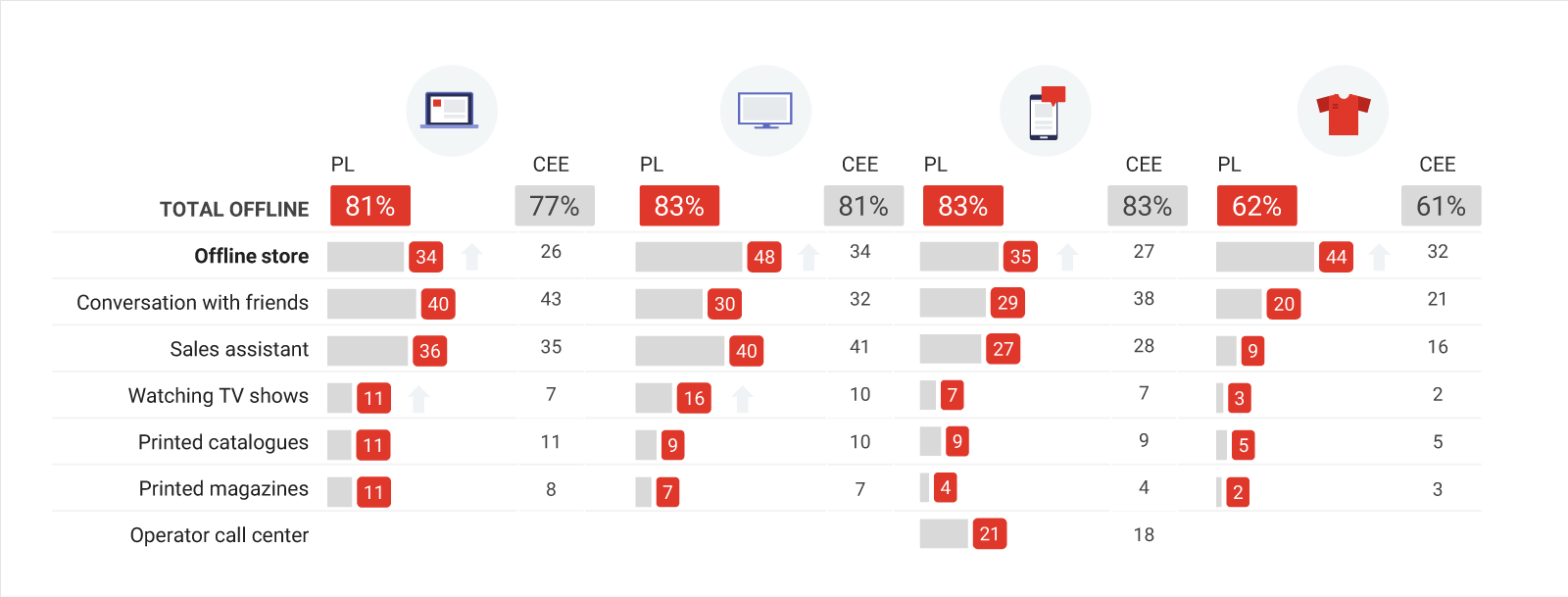
“Inspire me”
Polish consumers are “always shopping”. Beyond simply researching product specs and pricing, the typical Pole is an online window shopper who wants to be inspired and then find a bargain.
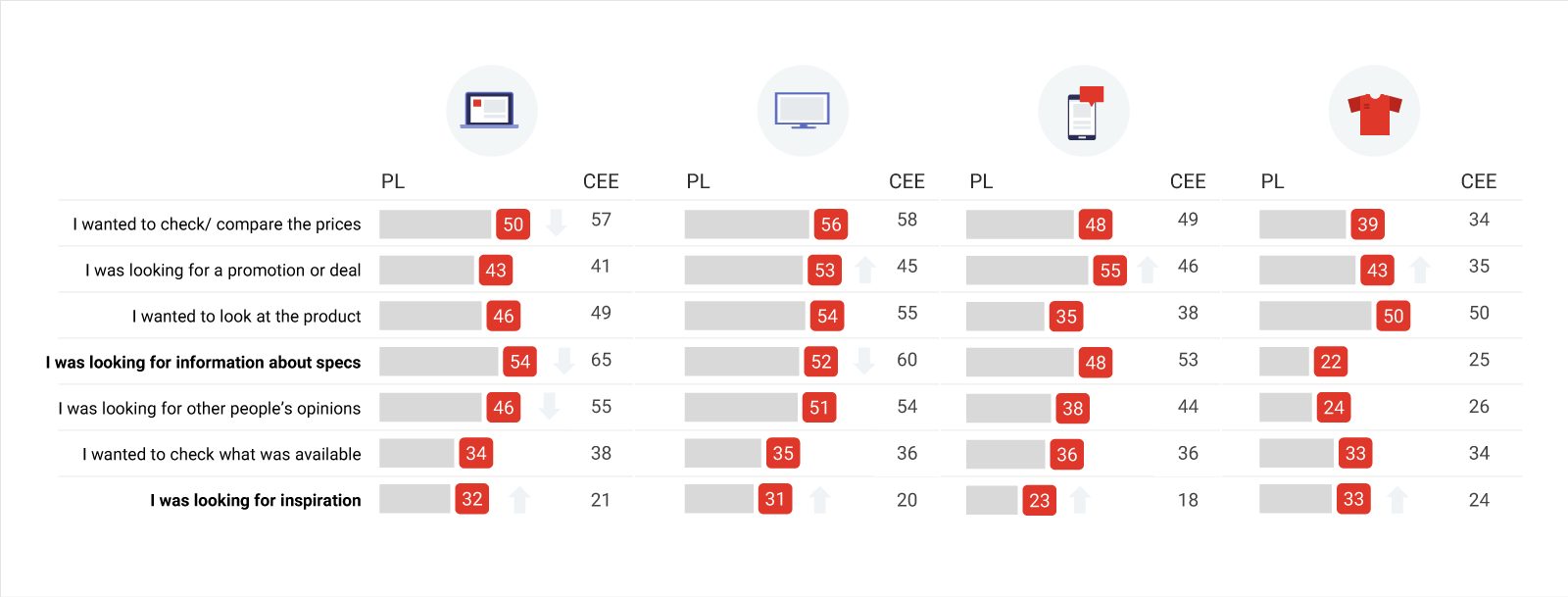
Mobile second screening
In a mobile-first world consumers are constantly connected. Understanding context — the when, where, how, and why mobile devices are used — is key for brands to reach consumers in the right moments with relevant messaging.
Poles are second screeners, meaning they use their smartphones to research while watching TV. In three out of the four categories, Polish consumers were more likely than consumers in the other three countries to research on their phones while watching TV or eating a meal.
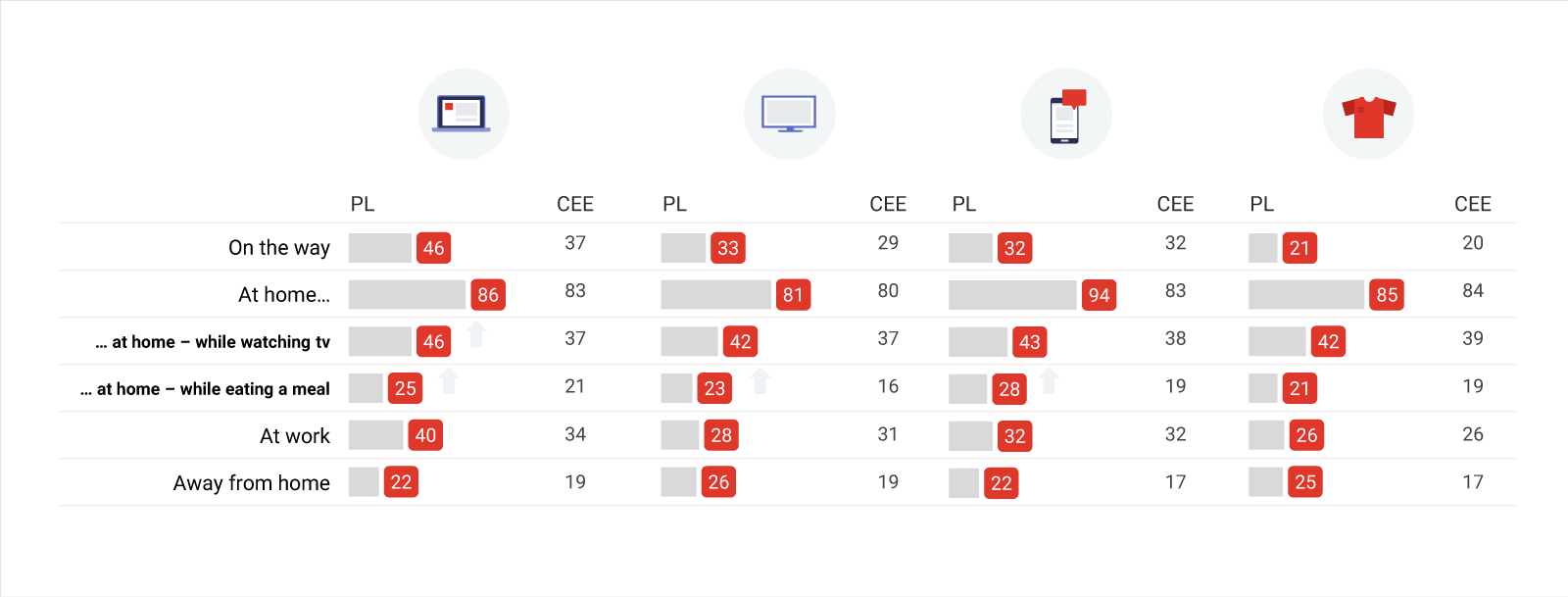
Shopping behaviour per category
Despite the shift to mobile, Poles still tend to use desktop when shopping online — suggesting an opportunity for brands to improve the country’s mobile experience. The top barriers to mobile research and shopping include the inconvenience of typing on smaller screens and comparing products and services.
Poles are spontaneous buyers and tend to make a purchase decision within one day of researching. They value offline touchpoints, moving seamlessly between the physical and digital worlds by using mobile devices while visiting offline stores.
These country specific traits vary depending on the type of product or service that Polish consumers are researching and shopping for. Here are some of the study’s key takeaways for each of the products and services.
Notebook takeaways
- A third of Notebook shoppers didn’t have any single brand in mind at the beginning of their path to purchase. This provides brands with an opportunity to influence these shoppers.
- They are spontaneous. As many as a quarter of Notebook shoppers completed their purchase within one day.
- They move seamlessly between the offline and online worlds. 81% of shoppers used offline touchpoints (despite the category’s online inclination). Half of the shoppers used mobiles to research products while visiting offline stores.
- Polish offline shoppers value interacting with shop assistants. Brands could invest in an online equivalent with virtual assistants or video campaigns.
TV takeaways
- 27% of TV shoppers didn’t have any single brand in mind at the beginning of their path to purchase, suggesting there is room to influence consumers.
- They are spontaneous. As many as a quarter of purchasers completed their path to purchase within one day.
- Half of shoppers used mobile devices to research while visiting offline stores, suggesting an opportunity to create online incentives like augmented reality apps with product specs and reviews.
Mobile phone contract takeaways
- A quarter of consumers didn’t have any single brand in mind at the beginning of the path to purchase when choosing a mobile provider.
- As many as a fifth of purchasers completed their path-to-purchase process within one day.
- 81% of shoppers used offline touchpoints (despite the category’s online inclination) and almost two fifths used mobiles for research while visiting offline stores.
Clothes and footwear takeaways
- Half of the clothes and footwear shoppers did not consider any one single brand at the beginning of the path to purchase.
- As many as half of the consumers completed their path to purchase process within one day.
- 62% of shoppers used offline touchpoints during the path to purchase and a quarter used mobiles for research while visiting offline stores.
- More shoppers used desktop than mobile when visiting price comparison websites.
